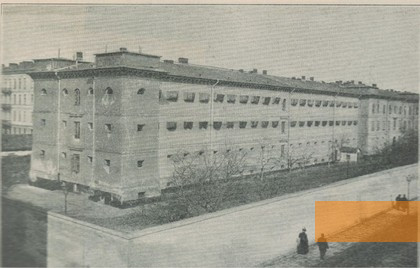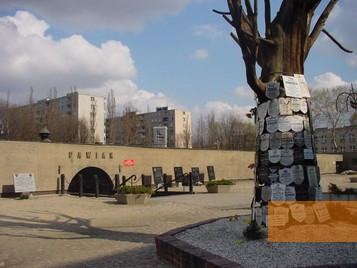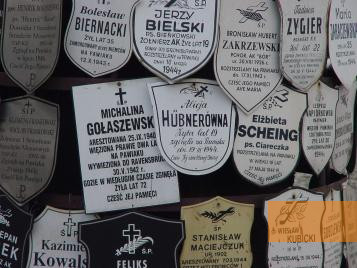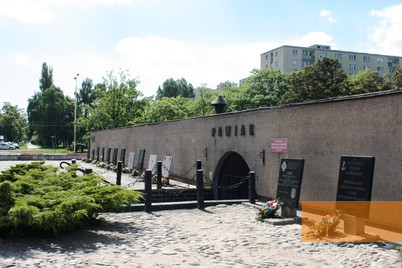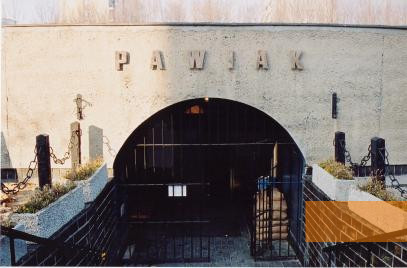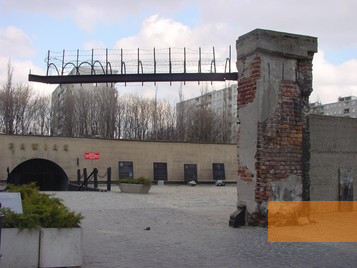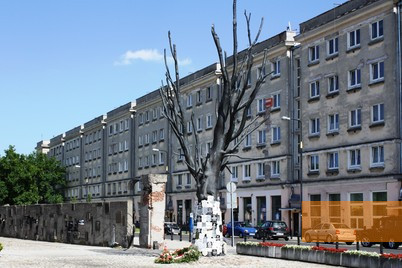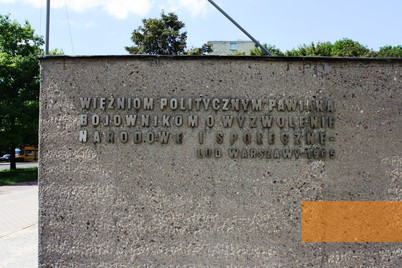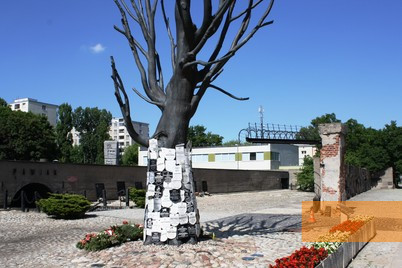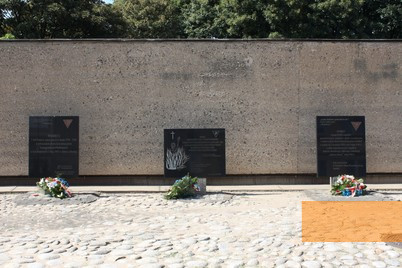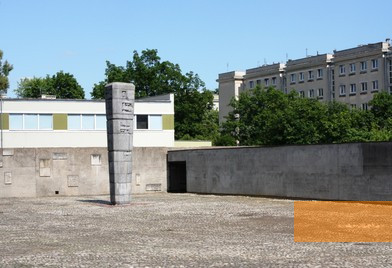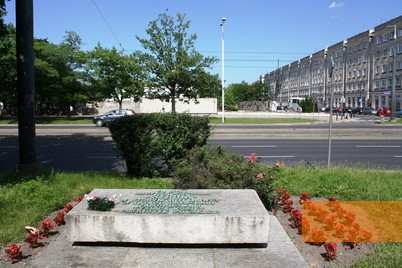In 1965, the Pawiak Prison Museum was opened. It commemorates the approximately 100,000 people to be incarcerated at the Pawiak Prison under German occupation 1939 to 1944.
Warsaw's Pawiak Prison was constructed between 1830 and 1835. At the time, this region of Poland was part of the Russian Empire. When Poland regained its independence after World War I, Pawiak - named after the street it was located on - was used as a remand prison. After the German invasion of Poland and the occupation of Warsaw in the autumn of 1939, it became the central Gestapo prison in Warsaw. The Pawiak Prison was under the control of the commander of the German security police and security service; the prison guards were members of the SS and the Ukrainian auxiliary police. Although the prison was located in the heart of the Warsaw Ghetto, which was established in 1940, most of the inmates were non-Jewish Poles from Warsaw and the rest of the General Government, including resistance fighters and members of the Polish intelligentsia. Next to the men's prison there was also a section for women known under the name of »Serbia«.
The Pawiak Prison was infamous for the brutal treatment of prisoners. Many of the 100,000 prisoners to pass through Pawiak between 1939 and 1944 were shot after being arrested or tortured to death. About 60,000 prisoners were deported to other prisons or concentration camps. During the Warsaw Uprising (August to October 1944), the SS dismantled the prison: On August 21, 1944, members of the SS murdered the remaining prisoners and blew up the prison building.
The Pawiak Prison was infamous for the brutal treatment of prisoners. Many of the 100,000 prisoners to pass through Pawiak between 1939 and 1944 were shot after being arrested or tortured to death. About 60,000 prisoners were deported to other prisons or concentration camps. During the Warsaw Uprising (August to October 1944), the SS dismantled the prison: On August 21, 1944, members of the SS murdered the remaining prisoners and blew up the prison building.
Up to 100,000 people passed through the Pawiak Gestapo Prison in Warsaw under German occupation. Many of these Polish political prisoners were deported to other prisons or concentration camps. At least 32,000 people were murdered during their incarceration at the Pawiak Prison. Only a few thousand inmates survived imprisonment.
In 1965, a one-storey building was erected on the site of the demolished prison. It has since then housed the prison museum. There are still some remains of prison buildings on the premises as well as numerous monuments. A tree also honours the victims: After the war, victims' relatives affixed memorial plaques to an elm. When the tree died, a bronze replica was erected on the site.
The Pawiak Prison is of great symbolic importance to Poles as one of the central sites of persecution of political prisoners; in 1983, the Polish pope John Paul II visited the memorial during his visit to Poland. The museum has been a branch of the Warsaw Museum of Independence since 1990.
On the opposite side of the Aleja Jana Pawła II, there is a memorial stone dedicated to the victims of the women's prison »Serbia«.
The Pawiak Prison is of great symbolic importance to Poles as one of the central sites of persecution of political prisoners; in 1983, the Polish pope John Paul II visited the memorial during his visit to Poland. The museum has been a branch of the Warsaw Museum of Independence since 1990.
On the opposite side of the Aleja Jana Pawła II, there is a memorial stone dedicated to the victims of the women's prison »Serbia«.
- Name
- Muzeum Więzienia Pawiak
- Address
-
ul. Dzielna 24/26
00-162 Warszawa - Phone
- +48 (0) 22 831 131 7
- Fax
- +48 (0) 22 831 928 9
- Web
- http://muzeum-niepodleglosci.pl/pawiak/
- pawiak@muzeumniepodleglosci.art.pl
- Open
- Wednesday to Sunday 10 a.m. to 5 p.m.
Closed on Monday and Tuesday


